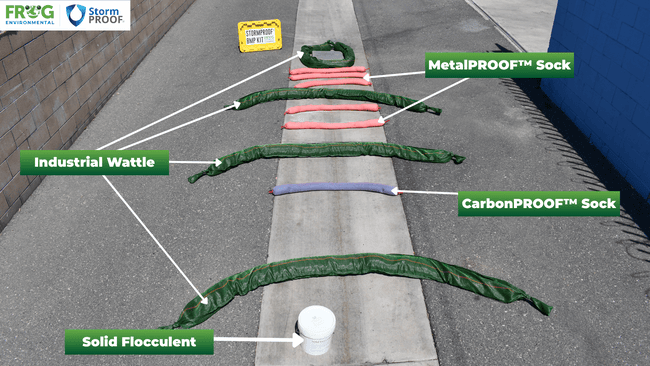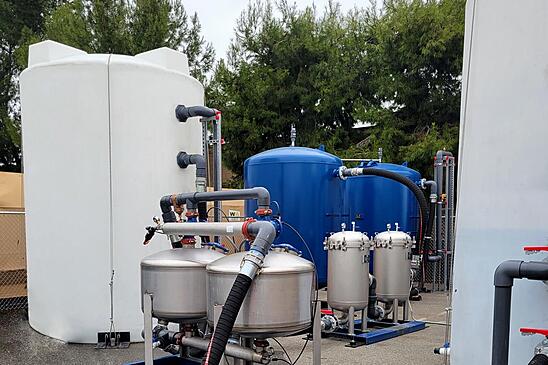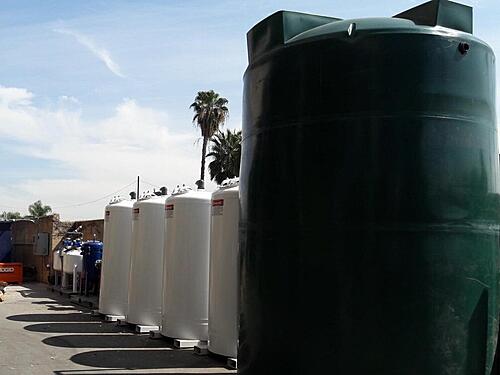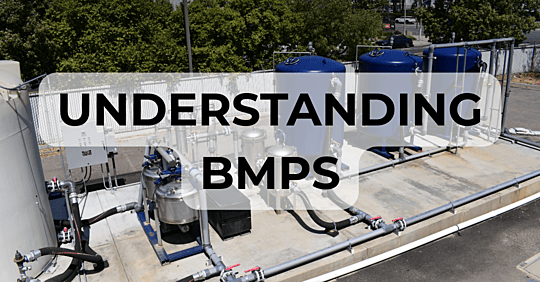
Minimum Required BMPs
These are the most common and cost-effective methods for controlling stormwater pollution at industrial and commercial facilities. Required for all permitted sites, these foundational practices focus on minimizing pollutant sources through routine maintenance and proactive measures.
Key types of Minimum Required BMPs include:
Good Housekeeping – Regular cleaning tasks such as sweeping, vacuuming, and general site organization to reduce pollutant buildup.
Preventative Maintenance – Routine inspections and timely repair of vehicles, equipment, and infrastructure to prevent leaks and mechanical failures.
Spill and Leak Prevention & Response – Implementation of spill kits, containment systems, and emergency response procedures to manage accidental releases.
Material Handling and Waste Management – Proper storage and disposal of materials, including covering waste containers and securing hazardous substances.
Erosion and Sediment Control – Stabilizing exposed soil and managing runoff to prevent sediment pollution during rain events.
When consistently applied, Minimum Required BMPs are highly effective at reducing industrial pollutants and helping facilities avoid stormwater discharge exceedances.
However, successful implementation requires ongoing effort, staff training, and time. In some cases—especially at high-risk sites—these BMPs alone may not be sufficient to fully prevent stormwater contamination, and additional structural or advanced controls may be necessary.

Intermediate BMPs
Intermediate Best Management Practices (BMPs) are designed to supplement the Minimum Required BMPs and provide an extra layer of protection against pollutants that may be missed during routine maintenance or cleaning. These BMPs are especially useful for industrial facilities seeking to strengthen their stormwater pollution prevention efforts.
Common Intermediate BMPs include:
Physical filtration devices such as industrial wattles, drain inlet filters, and media socks—all strategically placed to trap sediment, absorb oil, and reduce heavy metals in stormwater runoff.
Street sweeping, industrial vacuuming and power washing of paved or exposed industrial surfaces to remove accumulated pollutants before they can be mobilized by rain events.
Intermediate BMPs are often required for facilities with a Level 1 Exceedance Response Action (ERA) status under stormwater regulations. However, Baseline facilities may also choose to implement these practices proactively to improve compliance and reduce the risk of sample exceedances.
While Intermediate BMPs provide a valuable middle ground in stormwater management, they may not be sufficient for all sites. Facilities with extensive outdoor operations, heavy pollutant loads, or complex industrial activities may need to implement Advanced BMPs for effective stormwater pollution control.

Advanced BMPs
Advanced Best Management Practices (BMPs) are high-level stormwater controls designed for facilities where Minimum and Intermediate BMPs are not sufficient to meet water quality standards. These engineered solutions help reduce stormwater discharge pollutants through more comprehensive and infrastructure-intensive methods.
Common types of Advanced BMPs include:
Treatment Control – Systems such as advanced filtration units, oil-water separators, or chemical treatment systems designed to actively remove pollutants from stormwater runoff.
Containment and Discharge Reduction – Structures like retention ponds, detention basins, and storage tanks that slow down, store, or divert stormwater to reduce discharge volume and prevent pollutant release.
Exposure Minimization – Physical modifications to the site, such as roofing, shelters, or enclosures, to prevent materials from coming into contact with stormwater.
Choosing the right Advanced BMPs depends on multiple site-specific factors including industrial activity type, pollutant profiles, and site layout. These BMPs often require significant planning, infrastructure investment, and regulatory coordination and may need to be designed by engineers.
Advanced BMPs are mandatory for facilities with a Level 2 Exceedance Response Action (ERA) status under the Industrial General Permit. However, Baseline and Level 1 facilities may also choose to implement Advanced BMPs to enhance water quality protection, reduce risk of violations, and minimize potential third-party legal exposure.
Clearer Water, Faster: Watch Our Solid Flocculant Demo
See our Solid Flocculant in action! This demo shows how our innovative product quickly removes pollutants like nitrates and phosphates from stormwater, improving water clarity and helping you stay compliant with environmental regulations. Watch the video to see real results and learn how our flocculant can be an effective addition to your stormwater management toolkit.

From Exceedances to Non-Detect: ELG Metals’ Stormwater Success with FROG Environmental
Explore how a high-flow treatment retrofit solved recurring pollutant violations and delivered reliable IGP/TMDL compliance.
How Frog Environmental Helped Allan Co. Achieve 96% Pollutant Removal
Discover how Frog helped a California recycler eliminate stormwater exceedances through a cost-effective retrofit solution.


Why Are BMPs Essential for Industrial Facilities?
Dive deeper into what Best Management Practices (BMPs) are, and why they are required in California under the IGP and other federal and state regulations.
